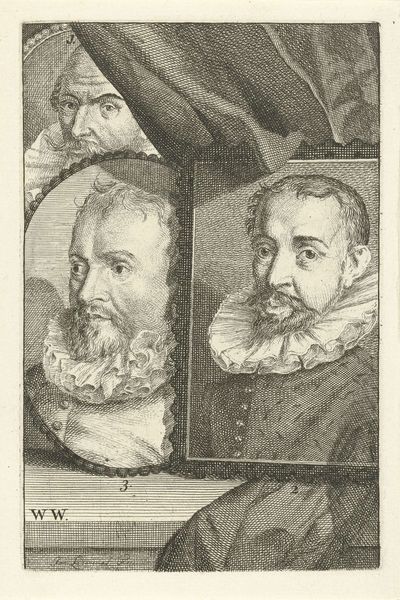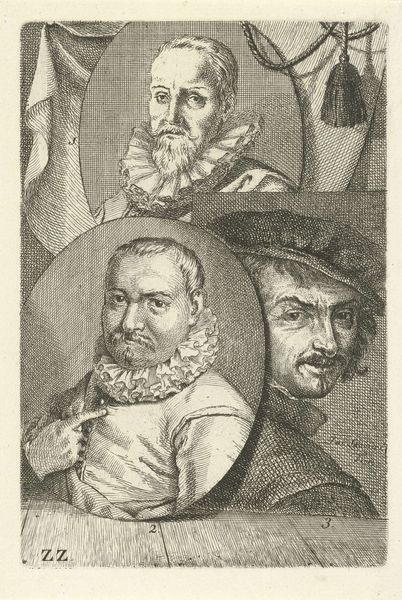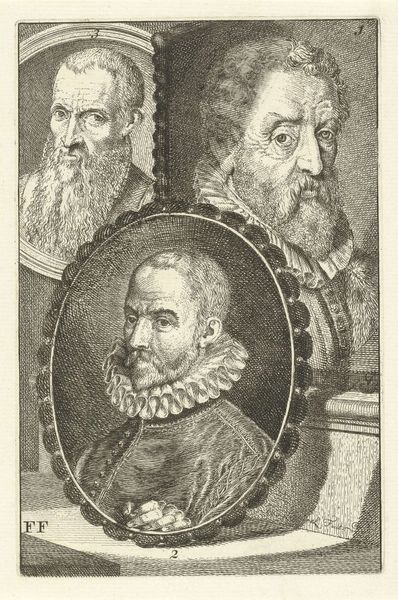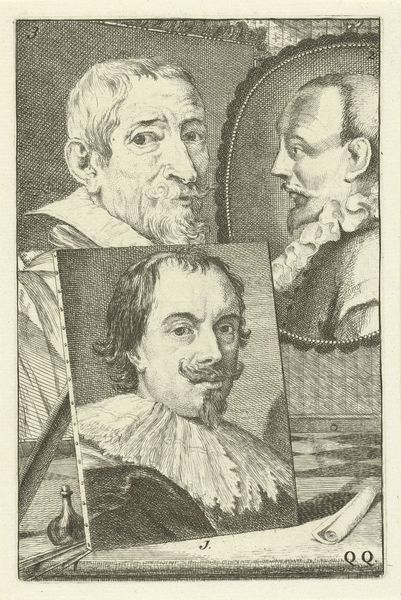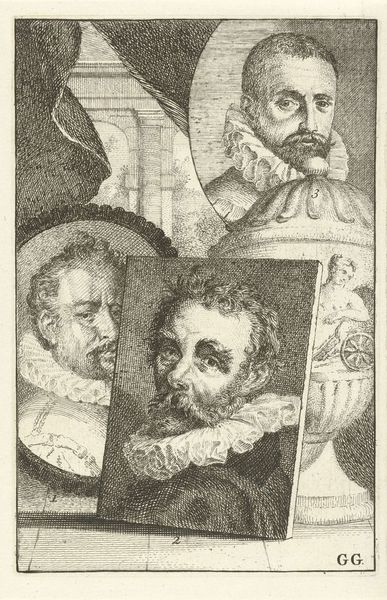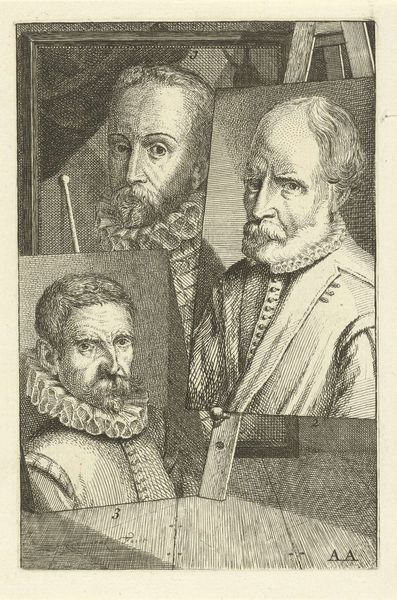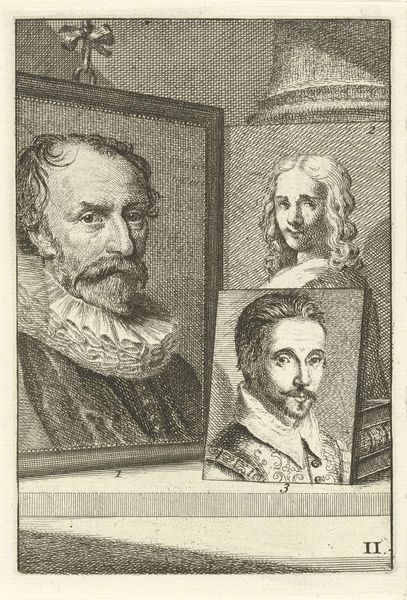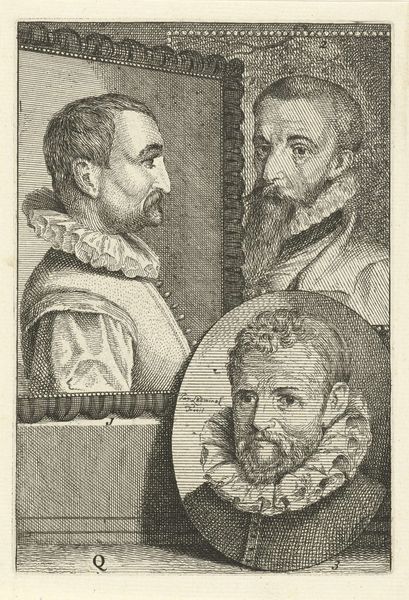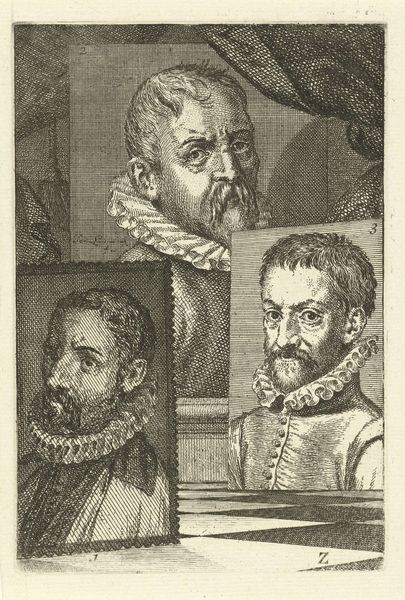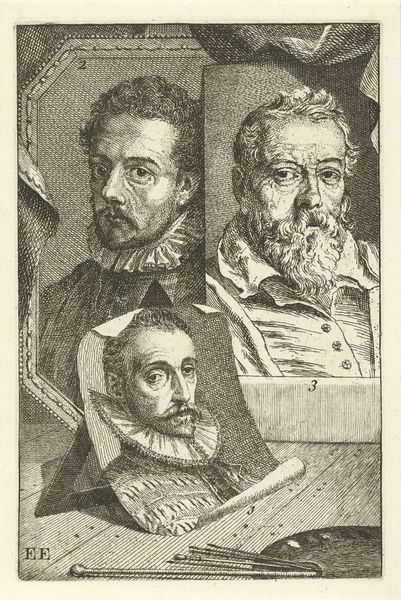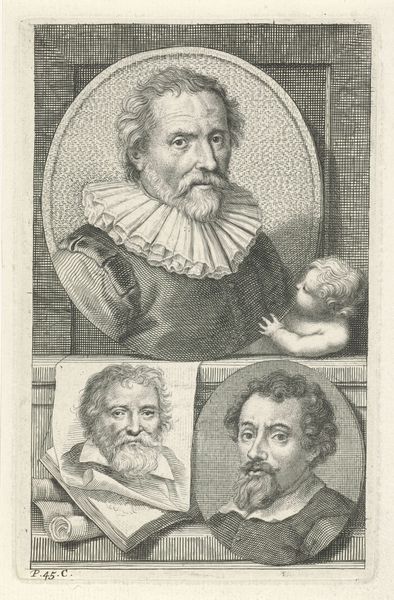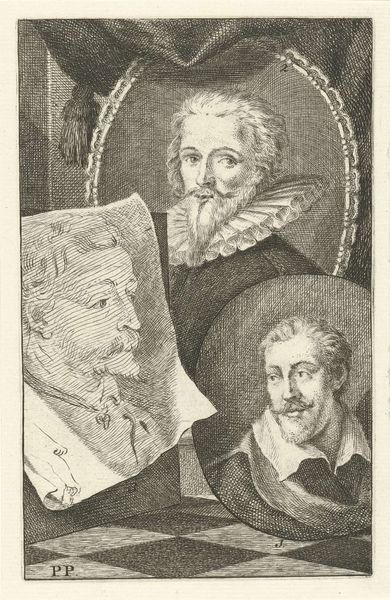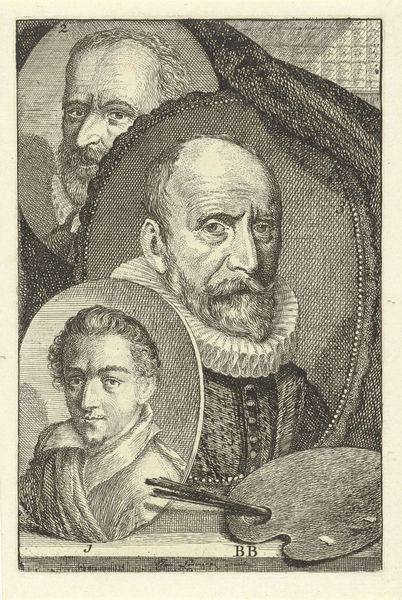
Dimensions: height 156 mm, width 103 mm
Copyright: Rijks Museum: Open Domain
Editor: Here we have Jan l' Admiral's "Portretten van Hendrik van Steenwijck, Jacob de Gheyn en Sebastiaan Vranx," an engraving from 1764. It's quite fascinating to see three portraits together like this. What stands out to you most when you look at it? Curator: Well, focusing on the materiality, notice the incredible detail achieved through the engraving process. Think about the labor involved, the skill in manipulating the metal plate, and the societal function of prints like this. It's not just about capturing likeness; it's about circulating images, making art and knowledge accessible, and building artistic communities through shared visual language. Editor: So, you are thinking less about the artistry in portraying them but how the choice of this process makes it accessible? Curator: Precisely! The engraving process is itself a choice laden with meaning. Unlike painting, engraving allows for reproduction and distribution. The choice of portraying these figures within what looks like individual portrait frames within a larger scene points towards the mechanization and commercial exchange of artistry at the time. What kind of socioeconomic factors played a role in Jan l' Admiral using the engraving method rather than other artistic methods to create this image, for example? Editor: I never considered it that way. That reframing makes the engraving method part of a social narrative. I am thinking about labor and materials more deeply than before. Thanks! Curator: Exactly! Examining the labor of creation invites inquiry into production, reception, and art's overall position in culture.
Comments
No comments
Be the first to comment and join the conversation on the ultimate creative platform.
